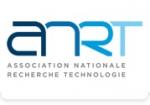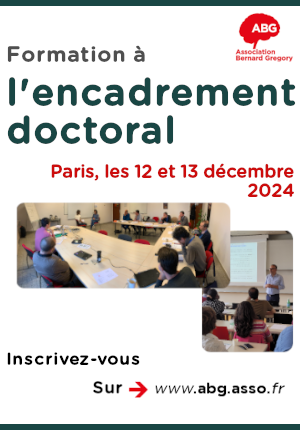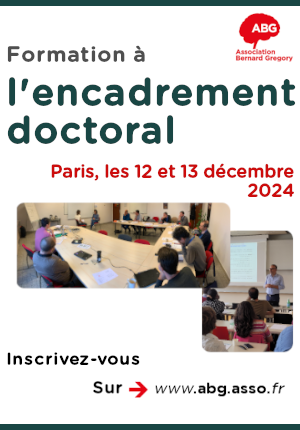Exploring Realistic Skin Numerical Models in THz Spectroscopy
| ABG-126447 | Sujet de Thèse | |
| 24/10/2024 | Financement de l'Union européenne |

- Physique
- Numérique
Description du sujet
Skin cancer, often caused by sunlight overexposure, necessitates annual awareness campaigns. Among skin cancers, cutaneous melanoma (CM) stands out as the most serious type, experiencing a 3% incidence increase in France from 2006 to 2015 (International Agency for Research on Cancer). CM's visibility allows potential detection by dermatologists or patients themselves, yet late diagnoses persist, often yielding life-threatening consequences. Consequently, the development of sensors for early skin cancer detection is a critical public health concern. Terahertz (THz) spectrometers are promising noninvasive tools for diagnosing skin-related conditions like skin cancer and burns. They operate in the spectral region between microwaves and optical waves, delivering higher resolution and greater tissue penetration compared to the former and latter. Their sensitivity to water dynamics, a key indicator of skin health, makes them well-suited for probing skin tissues.
Accurate electromagnetic (EM) skin diagnostics rely on characterizing skin parameters, including complex permittivity profiles, using EM skin models to interpret measurements. The EM response of skin tissues is governed by Maxwell’s equations and its prediction plays a crucial role in skin imaging, enabling mapping the measured field to the imaged parameters. Recently, a model has emerged introducing birefringence to model the layered structure of the stratum corneum (SC) to the standard three-layer model (SC, epidermis, dermis), thus improving the ability to mimic skin. At the same time, the commonly used plane-wave model, that assumes the incoming beam interacting with the sample to be planar, induces estimations errors. These approximations limit the accuracy of the obtained skin parameters, reduce the amount of information that can be extracted in the inverse scheme, and hinder the understanding of the field coupling between skin and the measurement setup.
This project aims to develop an EM solver for highly realistic skin models. The simulation tool will combine a full- wave skin model together with a physical optics-based model of the spectrometer. By hybridizing a regularized full-wave volume integral equation (VIE) with a physical optics-based solver (HF), we will tackle challenges such as the spectrometer's large electrical size, skin anisotropy, and the coupling between the sample and the spectrometer. Initially, the PhD student will validate both the full-wave and high-frequency asymptotic models. Then these two solvers will be hybridized and tested against experimental data from skin imaging scenarios or non destructive testing. This project will result in a numerical solver for characterizing realistic skin models, ultimately leading to advanced THz spectrometers and significantly enhancing non-invasive diagnostic tools for skin conditions.
Prise de fonction :
Nature du financement
Précisions sur le financement
Présentation établissement et labo d'accueil
The project will involve partners and facilities across multiple locations. The PhD student will spend 2.5 years at IMT Atlantique (Brest, France), 3 months at Terakalis (Montpellier, France), and 3 months at Politecnico di Torino (PoliTo, Turin, Italy). Each of these institutions provides essential tools and hardware to support the project activities. Computational software (e.g. FEKO, CST) will be available for comparing simulation results. Additionally, computational servers will facilitate large-scale simulations, while a high-performance computer in the group of Francesco Andriulli at PoliTo will further enhance computational capabilities. The student will also have access to advanced millimeter-wave lab facilities, including a characterization bench operating in the 0.22-0.33 THz frequency range, with an upcoming bench for 0.5-0.75 THz. These facilities feature a robotic arm for automating and performing 3D measurements, crucial for the project's experimental needs.
Site web :
Intitulé du doctorat
Pays d'obtention du doctorat
Etablissement délivrant le doctorat
Ecole doctorale
Profil du candidat
The candidate for this project should possess a solid background in some of the following topics: microwave engineering, electromagnetism, linear algebra, computational electromagnetics, and numerical modeling. The project spans multiple disciplines, integrating physics, electrical engineering, computational modeling, and biomedical engineering, with a focus on modeling advanced THz spectrometers and electromagnetic skin models. Candidates will collaborate with both academic and industrial partners, utilizing cutting-edge computational and experimental facilities across institutions. To be eligible, applicants must adhere to MSCA's mobility rule, ensuring they have not lived or worked in France for more than 12 months in the past three years. Additionally, candidates should be early-stage researchers (ESRs), holding a master's degree or equivalent, and in the first four years of their research career without having obtained a doctoral degree.
Vous avez déjà un compte ?
Nouvel utilisateur ?
Vous souhaitez recevoir nos infolettres ?
Découvrez nos adhérents
 ANRT
ANRT  ADEME
ADEME  Nokia Bell Labs France
Nokia Bell Labs France  MabDesign
MabDesign  CASDEN
CASDEN  MabDesign
MabDesign  SUEZ
SUEZ  Tecknowmetrix
Tecknowmetrix  CESI
CESI  TotalEnergies
TotalEnergies  Généthon
Généthon  Groupe AFNOR - Association française de normalisation
Groupe AFNOR - Association française de normalisation  Institut de Radioprotection et de Sureté Nucléaire - IRSN - Siège
Institut de Radioprotection et de Sureté Nucléaire - IRSN - Siège  ONERA - The French Aerospace Lab
ONERA - The French Aerospace Lab  Ifremer
Ifremer  Laboratoire National de Métrologie et d'Essais - LNE
Laboratoire National de Métrologie et d'Essais - LNE  Aérocentre, Pôle d'excellence régional
Aérocentre, Pôle d'excellence régional  Institut Sup'biotech de Paris
Institut Sup'biotech de Paris  PhDOOC
PhDOOC




